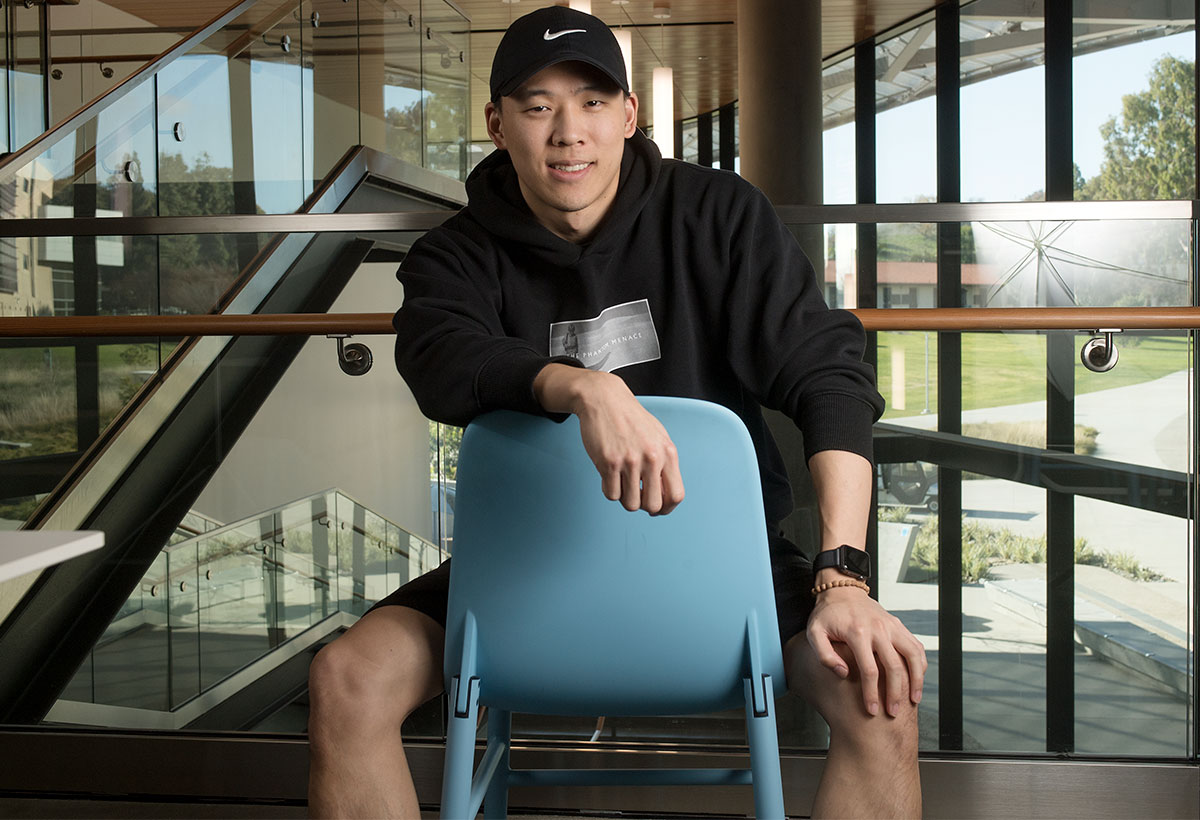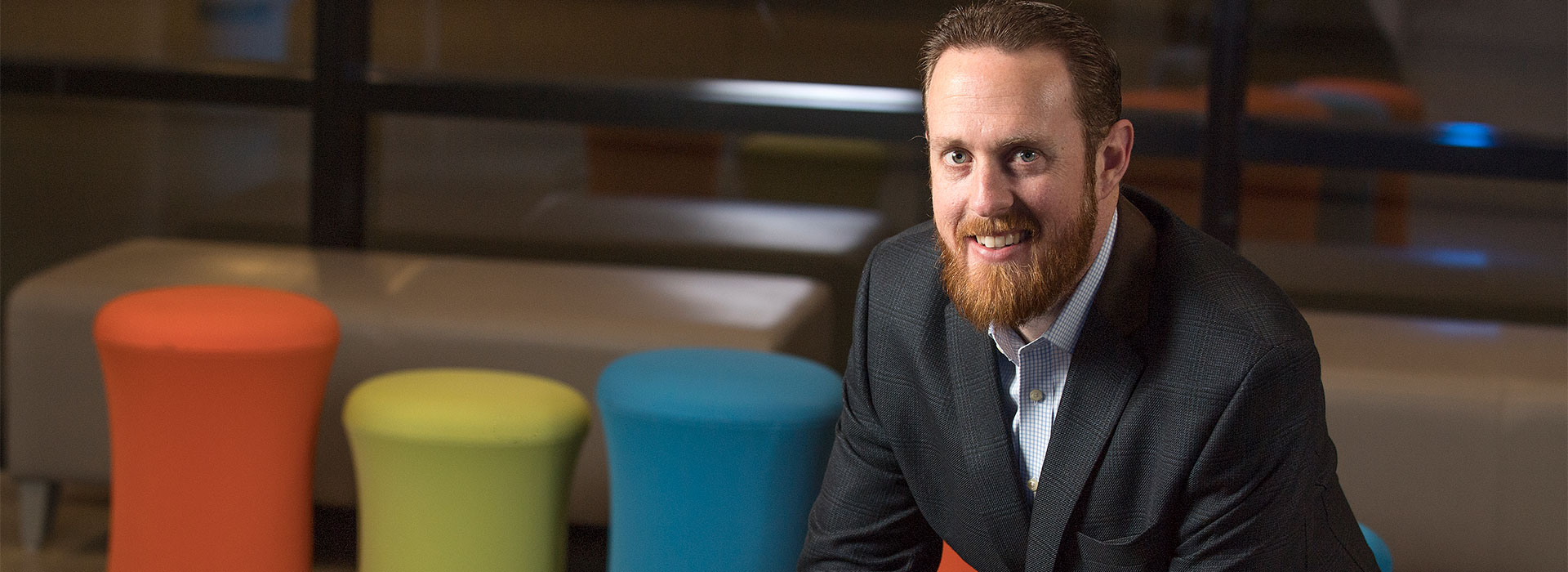You Say You Want a Transformation
Schools across America describe the transformative power of higher education in many different ways. What's the best description?
Cal Poly Pomona’s answer is simple: ALL OF THEM
By Nick Owchar
American higher education has seen better days.
Long before the nationwide admission scandals, there was already growing skepticism about the value of a university degree, especially in this age of self-made entrepreneurs, proliferating startups, master classes on YouTube and elsewhere, and much more.
“What good is a higher education?” a recent Atlantic piece bluntly asks. The New York Times doesn’t pull any punches either
(“College May Not Be Worth It Anymore” one headline declares), while a Washington Post commentary tells readers that employers today care about an applicant’s talent and experience while their college degree is just a signal that graduates “are willing to put up with four years of (mostly) boring lectures and (mostly) tedious assignments…”
Ouch. Hardly a ringing endorsement of higher ed.
Many have responded to such criticism using the t-word — transformation — to justify the continuing value and relevance of the college experience. Universities, they say, are still important as incubators for growth and transformation; they provide the kinds of powerful transformative experiences one can’t find anywhere else.
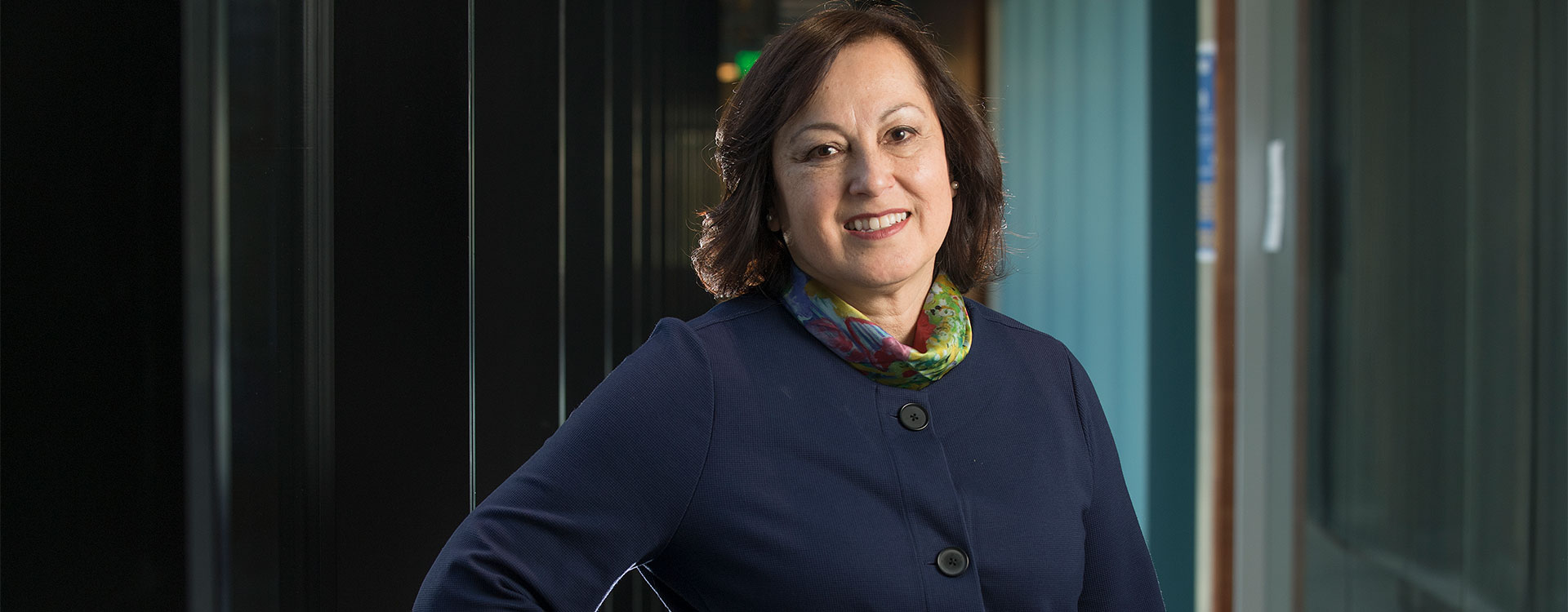
Sylvia A. Alva, provost and vice president for academic affairs, agrees. The college experience is transformative, she says, but she still advises caution in the way the term is used.
“Universities are very transformative places today, but there isn’t a single way to define what ‘transformation’ means,” she says. “It depends on the institution.
It depends on the individual and the situation. Transformation is a term that definitely has many lenses, and we try to think through and plan for all of them here.”
As all kinds of disruptions and innovations are continuing to change the way we do everything, from buying clothes and groceries to how we think and communicate, the Cal Poly Pomona community is thinking about our place in the changing educational landscape.
Rather than pursue a one-size-fits-all definition of the term, the university continues to embrace transformation in its many forms and at every level: individuals, groups, even the institution itself. That inclusive attitude is embedded in our polytechnic DNA and the experiences of our members, some of whom offer up the following reflections on what transformation means at Cal Poly Pomona today.
Do transformations only happen in the REAL WORLD?
That’s what Peter Thiel thinks. If his name seems familiar to you, it might be because this billionaire started offering “dropout fellowships” of $100,000 to college-age students in 2011. Real transformational experiences, he said, only happen when you take risks in the real world and work hard on an actual business idea, which his seed money would help fund.
Tari Hunter begs to differ.
As director of the Office of Student Life & Cultural Centers, she challenges the argument that universities are bubbled off from the rest of the world.
“We’re a commuter school. Our students bring society’s changes to campus with them; they don’t leave them at home,” she says.
“There’s really no hard line you can make in the sand between what’s happening out in society and on our campus.”
Nothing better illustrates that for her than the six cultural centers that she oversees — African American Student Center, Asian and Pacific Islander Student Center, César E. Chávez Center for Higher Education, Native American Student Center, Pride Center, and Women’s Resource Center.
The centers offer a special kind of transformation, she says — of one’s opinions and prejudices, of one’s sense of identity and understanding of the social issues and public policies that filter down and affect all of our lives.
In 2019, for instance, when the African American Student Center hosted a visit by Patrisse Cullors, a founder of Black Lives Matter, some attendees didn’t fully understand what Black Lives Matter was all about. That was the point, Hunter says. They came to learn.
“A big part of the transformative college experience requires intersectionality — an overlapping of issues and challenges that can really help support a student’s growth and development. Any critic who says that important transformations don’t happen in higher education just isn’t looking in the right places.”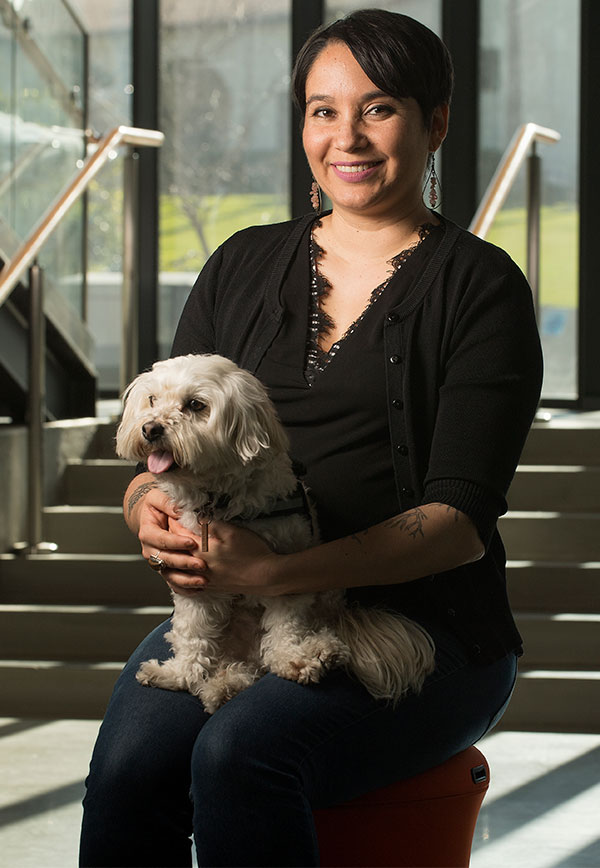 The same is true of the classroom. For Shayda Kafai, a professor of ethnic and women’s studies (EWS), today’s classrooms (like the university’s cultural centers) can be powerful spaces for important personal discoveries. It depends on the educator’s perspective.
The same is true of the classroom. For Shayda Kafai, a professor of ethnic and women’s studies (EWS), today’s classrooms (like the university’s cultural centers) can be powerful spaces for important personal discoveries. It depends on the educator’s perspective.
“We have to cultivate a space in which everyone is heard,” she says. “The classroom is a space that students step into and that makes them feel safe enough to challenge what they’re hearing. Cal Poly Pomona has been flexible enough to allow that kind of dynamic in my classes, and that’s led to some powerful transformations for my students.”
From the moment she started teaching on campus, while enrolled at nearby Claremont Graduate University in its cultural studies doctoral program, Kafai set about dispelling the traditional idea of what transformation means.
“The way we use that word in higher ed is really curious,” she says. “The traditional idea is that it’s always going to be the professor who transforms the students, and that’s a problem. It doesn’t really happen that way. It’s a mutual relationship. The traditional view misses out on that reciprocity.”
A good example, she says, is Bronco Scholars, an early start program that welcomes a cohort of incoming freshmen to campus for five weeks during the summer to assist them in acclimating to their new life.
“On the very first day, we talk about guidelines for our community and our expectations of each other,” she says. “I’m
not just telling them what I want. These 17- and 18-year-olds, in a very vulnerable way, tell me what they need. This is powerful. It transforms our classroom space, and it’s far from the traditional idea that students are just passive receptacles for a professor’s wisdom.”
Because EWS coursework is available as a part of Cal Poly Pomona’s general education requirements, many non-EWS majors in Kafai’s classes often discover new ways of thinking about themselves to help them overcome any challenges that might arise in their chosen fields.
“They learn a new vocabulary to help them understand what is happening in their lives,” she says. “That’s what we give our students when we treat classrooms as transformative spaces. We set the stage for important changes.”
Transformations require PERSEVERANCE and TRUST
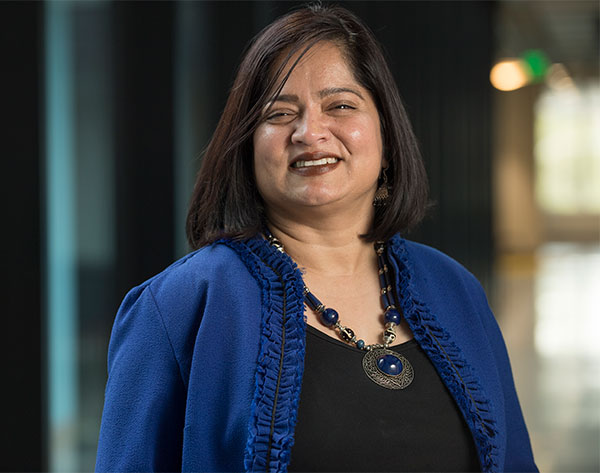 When a butterfly slips from the cocoon, it isn’t easy. A great deal of struggle is involved. But the result is worth the pain. It’s no different for an organization.
When a butterfly slips from the cocoon, it isn’t easy. A great deal of struggle is involved. But the result is worth the pain. It’s no different for an organization.
Since fall 2018, Preeti Wadhwa, an associate professor of management in the College of Business Adminis-tration, has watched as the university emerged from a cocoon of sorts from an academic calendar based on the quarter system to a semester system aligned with the other campuses in the California State University system.
“As is the case with any radical organizational change, there was definitely some uncertainty and fear of the unknown among our stakeholders, both students and staff,” recalls Wadhwa, who was involved in the campuswide planning process for this change and has helped counsel and advise her colleagues and students through the transition.
“We are all creatures of habit. When a change happens, it creates ambiguity and anxiety about a person’s future. We worry about how the change is going to affect us. Even if we believe that the change is good for us, we are concerned that we may not have enough resources to manage it successfully. That’s an understandable reaction. It’s normal.”
Today, almost two years into the change, people are more or less getting used to the new system and seeing the benefits, she says.
“It wasn’t just a simple shift from one schedule to another. People must realize that,” she says. “It was a great opportunity for us to create a deeper, authentic transformation in our curriculum. In our college, we have spent a lot of time doing that and looking at our programs to make sure that we meet employer needs and that our students are ‘market ready.’”
In other words, the benefits of transformation far outweigh the challenges.
Provost Alva couldn’t agree more.
Throughout her 30-year career in the CSU system — during which she built student academic support networks and innovative programs at three CSU campuses, and today oversees Cal Poly Pomona’s academic priorities in sync with the vision of President Soraya M. Coley — she has helped a large public system transform and meet students where they are.
For her, in many ways, this work has been very personal.
“My own life has been radically transformed and redirected by higher education. I know what many of our students are feeling because I come from a similar background,” says Alva, a first-generation college student and the daughter of immigrants. “I’ve spent my career working to create and improve conditions so that they won’t have some of the challenges and negative experiences that I had.”
She recalls her own college aspirations being discouraged by high school counselors. Later, even after overcoming obstacles and arriving as a freshman in college, the struggle still wasn’t over. She says she searched for a sense of belonging and a network of support but often felt “disconnected and out of place.”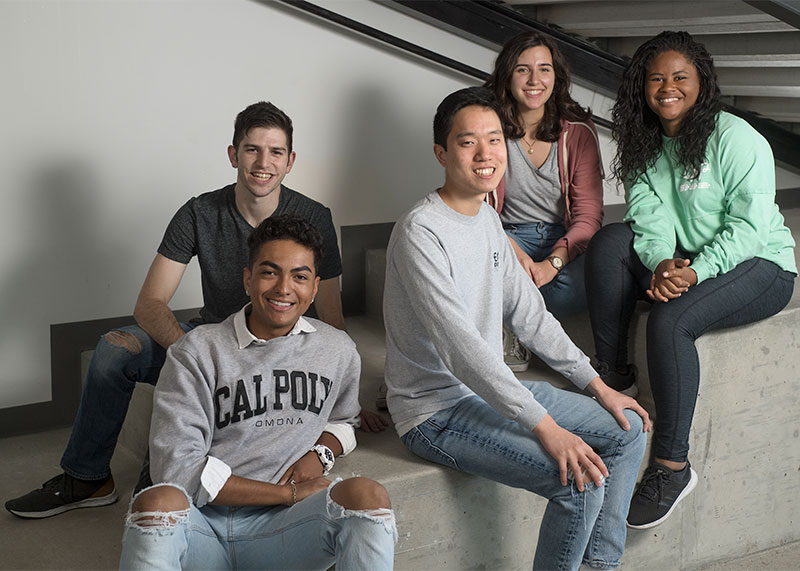 Memories of that sense of disconnection would fuel Alva’s desire to create strong student supports and her own scholarly research into the nature of resiliency and the keys to student success. Over her career she has also helped find solutions to administrative policies both large and small that, however well-intentioned, she says, “sometimes become barriers that get in the way of our students’ success.”
Memories of that sense of disconnection would fuel Alva’s desire to create strong student supports and her own scholarly research into the nature of resiliency and the keys to student success. Over her career she has also helped find solutions to administrative policies both large and small that, however well-intentioned, she says, “sometimes become barriers that get in the way of our students’ success.”
“Caring communities can forever change a student’s life course. That requires providing the necessary guidance and support, compassion and understanding from a team of individuals within the institution. That, for me, is fundamental to the kind of transformation you find in higher education and on our campus.”
Transformations can’t be CONTROLLED...OR PREDICTED
Matt Sanford’s professional transformation has brought him a long way from the career ambitions he once had as a teen to become an orthodontist.
Sitting in a chair at his orthodontist’s office getting braces, he shared his career goal with the guy working on his teeth. Yes, his orthodontist told him, it was a good career, but he warned Sanford “whatever you do, get a minor in business,” Sanford recalls.
“He told me that he graduated from dental school with too many people who didn’t know how to run a business.”
Flash forward to Sanford’s freshman year. The introductory biology course and the thought of dealing with copious amounts of human saliva didn’t appeal enough to Sanford to keep that career dream alive.
His orthodontist’s business advice, however, did steer Sanford (’07, finance, real estate and law) into the College of Business Administration. He went on earn his law degree from Loyola Law School and gained other experiences before finding his niche as the legal operations manager at The Mortgage Law Firm, PLC, where he is tasked with looking at ways to improve the efficiencies and smooth the flow of various legal work processes and operations.
Today, as the president of the Cal Poly Pomona Alumni Association, whenever Sanford talks to students about their career plans, he thinks of his old orthodontist and advises students to be open. Transformations, he says, happen where and when you least expect.
“I think of the things that led me in this direction, and there’s no way I could have predicted any of it,” he says.
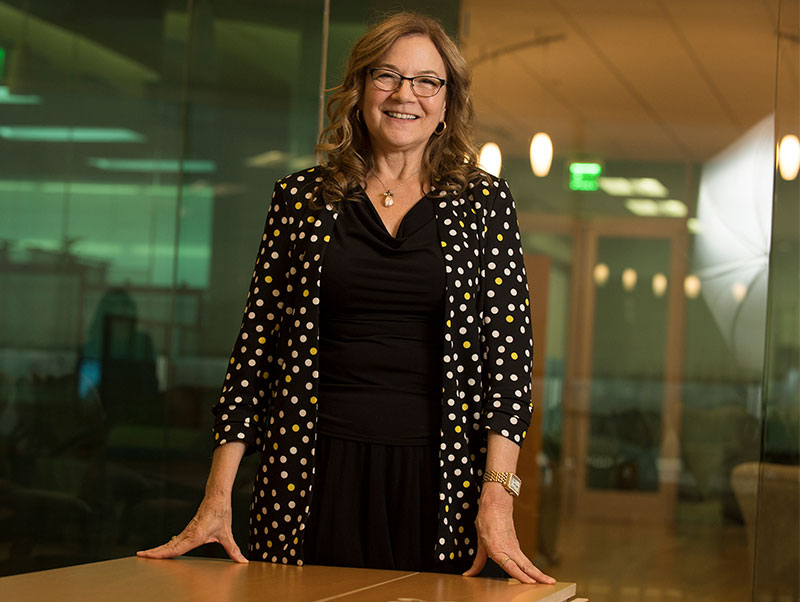 What is also normal, says Brenda Diederichs (’80, political science), is that some transformations may start in college and take much longer to finish.
What is also normal, says Brenda Diederichs (’80, political science), is that some transformations may start in college and take much longer to finish.
In fact, says Diederichs, who also serves on the Alumni Association board, those transformations might never end.
“I think they can take a lifetime, especially if you’re the kind of person who is curious, driven and always learning something new. Then I don’t think the changes will ever stop unless you do,” says Diederichs, who is the director of human resources for the county of Riverside. “That’s been true for me. My transformation started at Cal Poly Pomona, but I don’t think it’s stopped. I’m constantly learning and following my ambitions to take on new challenges.”
Over the arc of her professional career, starting with her freshman year, Diederichs says she has watched herself transform from an outsider to an insider.
“I really felt like an impostor when I first stepped on campus,” she recalls. “I was this 18-year-old kid from a single-parent, working-class household. I didn’t have any frame of reference for college. I had nothing to prepare me for it, and I didn’t feel like I belonged there.”
But Diederichs’ ambition — and the opportunities afforded by Cal Poly Pomona — transformed that uncertain 18-year-old into a successful, award-winning labor and employment lawyer (like Sanford, she has a J.D. from Loyola) who now oversees HR for one of the region’s largest counties.
2020 VISION
A word of warning about the word “transformation.” When schools pursue transformative visions that grow too complicated, problems are sometimes bound to occur.
Take Massachusetts’ Newbury College, which closed its doors in 2019 after a major overhaul of its academic and student life programming didn’t halt falling enrollments; and University of Texas at Austin, whose highly-publicized full-scale reinvention plans moved too slowly and went belly up when the provost there decided that enough was enough.
One reason for Cal Poly Pomona’s ongoing success is that the institution has stayed faithful to a vision of transformation whose simplicity was articulated by Provost Alva: That universities should nurture not one kind of transformation but many — in classrooms, in various campus organizations, around campus, at all levels. Every student’s needs and situation will be different. The opportunities to support student transformation must be, too.
That’s true for Gary Huang, a self-described late bloomer.
After graduating from Diamond Bar High School, Huang spent nearly a decade trying a variety of jobs — as an IT tech, a tutor, a mechanic and aspiring entrepreneur — before deciding to give college a try.
He says it was the tutoring job and the positive affirmation of the kids he helped, that finally made him realize he was college-worthy.
“Up to then, I really didn’t know what my plans were. They sure didn’t include college,” says Huang, 26, now a senior majoring in computer science. “I felt like I waited too long and missed my chance. But helping these kids felt really good, and it made me start thinking that maybe it wasn’t too late.”
He’s right. Cal Poly Pomona’s vision to be the model for an inclusive polytechnic university recognizes that not all transformations happen at a prescribed schedule. Since opening its doors in 1938, the campus has answered the needs and circumstances of every kind of student, including 18-year-old freshmen, community college transfers, veterans and parents. The university welcomed Huang with open arms.
Today he is creating a new life, building confidence and a community of friends and teachers that he’s never had before. His attitude and outlook on life also points to the transformative value (regardless of what the headlines might say in the major media) that is found in higher education … and at Cal Poly Pomona.
“I’m truly amazed at what’s happened,” Huang says. He’s especially proud of tackling and conquering calculus and other math classes he once dreaded in high school and moving closer to receiving his undergraduate degree. The finish
line — commencement in May 2020 — is almost in sight.
“I never thought I’d ever be able to say I finished those classes. It’s been a full 180 for me here, and I’m not even done. That’s the great thing. I’ve got so much more ahead.”
